2025 Challenge Summary

The Human Lander Challenge (HuLC) is an initiative supporting NASA’s Exploration Systems Development Mission Directorate’s (ESDMD’s) efforts to explore innovative solutions for a variety of known HLS challenge areas. Through this competition, college students become important partners in NASA’s advancement of HLS technologies, concepts, and approaches. Improvements in these technology areas have the potential to revolutionize NASA’s approach to space exploration, and contributions from the academic community are a valuable part of the journey to discovery. HuLC is open to full-time or part-time undergraduate and graduate students at an accredited U.S.-based community college, college, or university. Minority Serving Institutions are encouraged to apply.
The 2025 Human Lander Challenge asks teams of students and their faculty advisors to design innovative solutions and technology developments addressing in-space cryogenic liquid storage and transfer systems for long duration NASA missions to the Moon. In-space propulsion systems utilizing cryogenic liquids as propellants are necessary to achieve NASA’s exploration missions to the Moon, and later to Mars. In current state of the art (SOA) human scale, in-space propulsion vehicles, cryogenic liquids can be stored for several hours. In order for the planned HLS mission architecture to close, cryogenic liquids must be stored on-orbit on the order of several months.
The 2025 HuLC competition asks student teams to develop innovative, systems-level solutions to understand, mitigate potential problems, and mature advanced cryogenic fluid technologies that can be implemented within 3-5 years. The potential solutions that teams can propose include, but are not limited to, the following categories:
- On-Orbit Cryogenic Propellant Transfer
- Microgravity Mass Tracking of Cryogenics
- Large Surface Area Radiative Insulation
- Advanced Structural Supports for Heat Reduction
- Automated Cryo-Couplers for Propellant Transfer
- Low Leakage Cryogenic Components
This is only a brief excerpt of the 2025 HuLC Competition.
Please read the full 2025 Challenge Summary and Guidelines Document by clicking the button below.
Submissions
Deadline: Rolling until March 3, 2025
Not Required to Submit a Proposal Package
DATES & Deadlines
| Date | Description |
|---|---|
| Rolling until March 3, 2025 Optional | Deadline to Submit a Notice of Intent (NOI) |
| October 24, 2025 | Deadline to Submit Questions in Advance for Q&A Session |
| November 7, 2024 2:00-3:30 PM Eastern | Q&A Session with NASA Sponsors |
| March 3, 2025 | Deadline to Submit a Proposal Package |
| April 3, 2025 | Teams Notified of Selection Status |
| May 8, 2025 | Deadline to Make a Hotel Reservation at HuLC Group Rate |
| May 12, 2025 | Deadline to Register and Pay for the HuLC Competition Forum |
| May 28, 2025 | Deadline to Submit a Technical Paper |
| June 3, 2025 | Teams Notified of Prototype Approval Status |
| June 20, 2025 Noon EST | Deadline to Submit Presentation Chart Deck and Poster Files |
| June 23, 2025 | Team Check-In at the 2025 HuLC Competition Forum |
| June 24-26, 2025 | NASA's 2025 HuLC Competition Forum in Huntsville, AL |
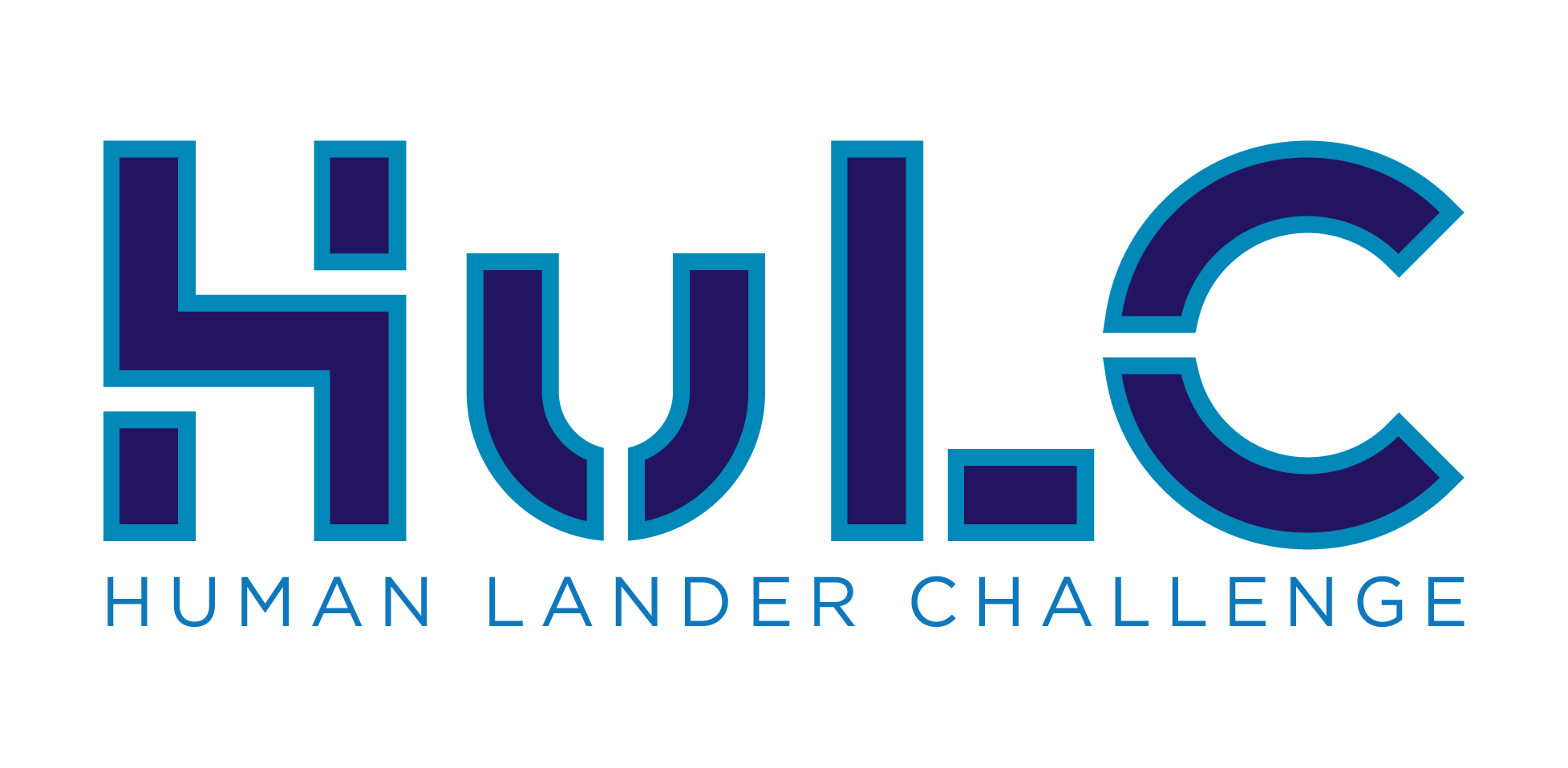
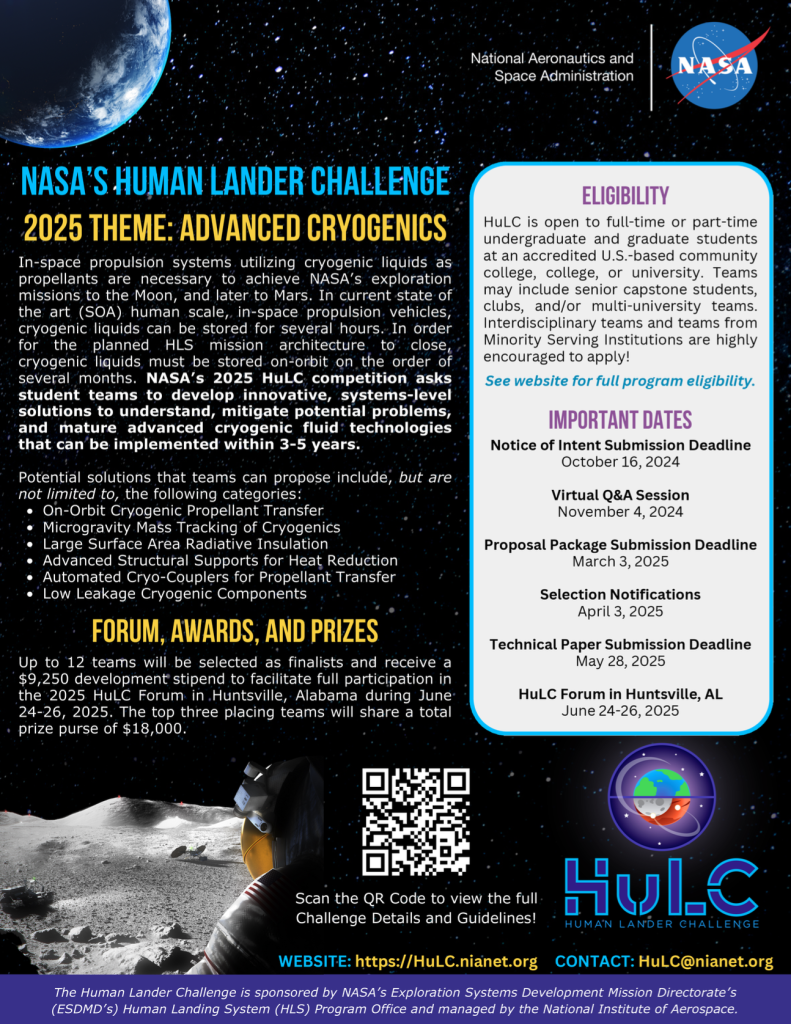





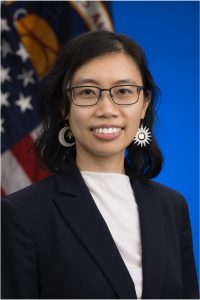 Esther Lee
Esther Lee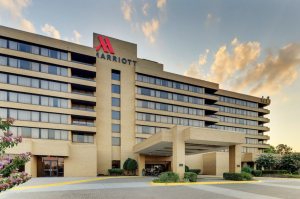
 Monica Guzik
Monica Guzik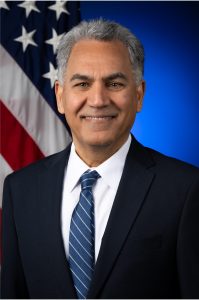 Jamshid Samareh
Jamshid Samareh Wesley Chambers
Wesley Chambers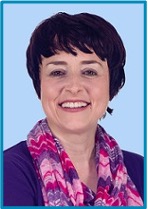 Lora Dishongh
Lora Dishongh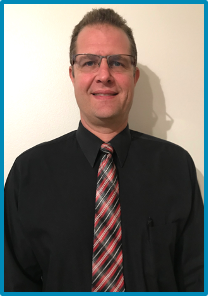 Mark Lewis
Mark Lewis Manish Mehta
Manish Mehta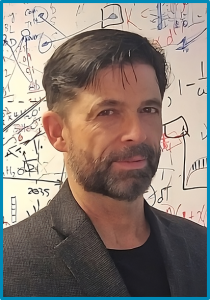 Philip Metzger
Philip Metzger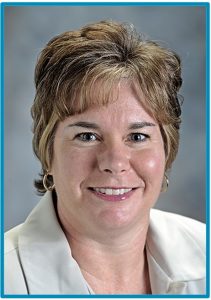 Michelle Munk
Michelle Munk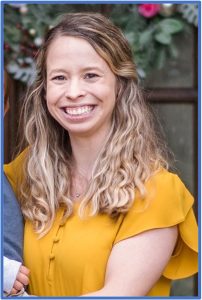 Samantha Harris
Samantha Harris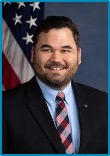 Matt Simon
Matt Simon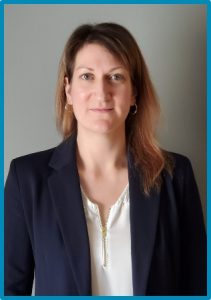 Ashley Korzun
Ashley Korzun Juan Valenzuela
Juan Valenzuela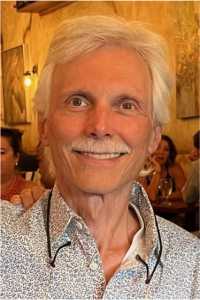 Mark Wollen
Mark Wollen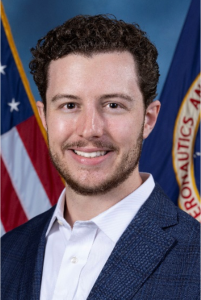 Reid Ruggles
Reid Ruggles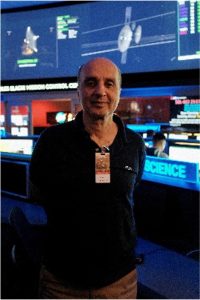 Ali Kashani
Ali Kashani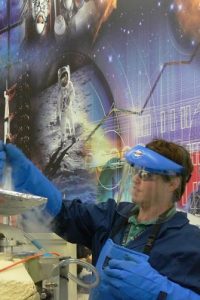 Wesley Johnson
Wesley Johnson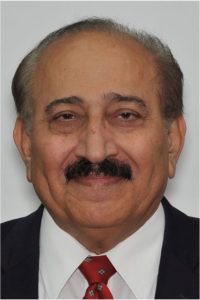 Ali Hedayat
Ali Hedayat Michael Dipirro
Michael Dipirro